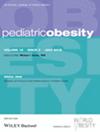Breastfeeding during infancy is associated with healthier beverage consumption later in childhood, but little is known about this relation during infancy. This was a longitudinal study of breastfeeding and less healthy beverage consumption during the first year of life, in a birth cohort study conducted 2013–2018 in the Southeastern United States (n = 666).
We estimated monthly rates of 100% juice and sugar-sweetened beverage (SSB) consumption comparing infants who were exclusively or partially breastfed, versus those who were not, in multivariable adjusted models.
Mothers had a median age of 26.5 years, 71% identified as Black/African-American, and 61% reported household incomes <$20 000/year. The prevalence of any breastfeeding during the first month was 78.2% and 18.7% at month 12. By age 12 months, infants consumed juice a mean (SD) 9.1 (10.1) times per week and SSBs 3.6 (9.5) times per week. Breastfed infants had a 38% lower incidence rate of weekly juice consumption (95% CI 52%, 15%, p = 0.003) and a 57% lower incidence rate of weekly SSB consumption (95% CI 76%, 22%, p = 0.006), compared with infants who were not breastfed.
Research on early-life correlates of dietary health should focus on the earliest beverages, given evidence that consumption of obesogenic beverages may begin prior to age 1 year.


